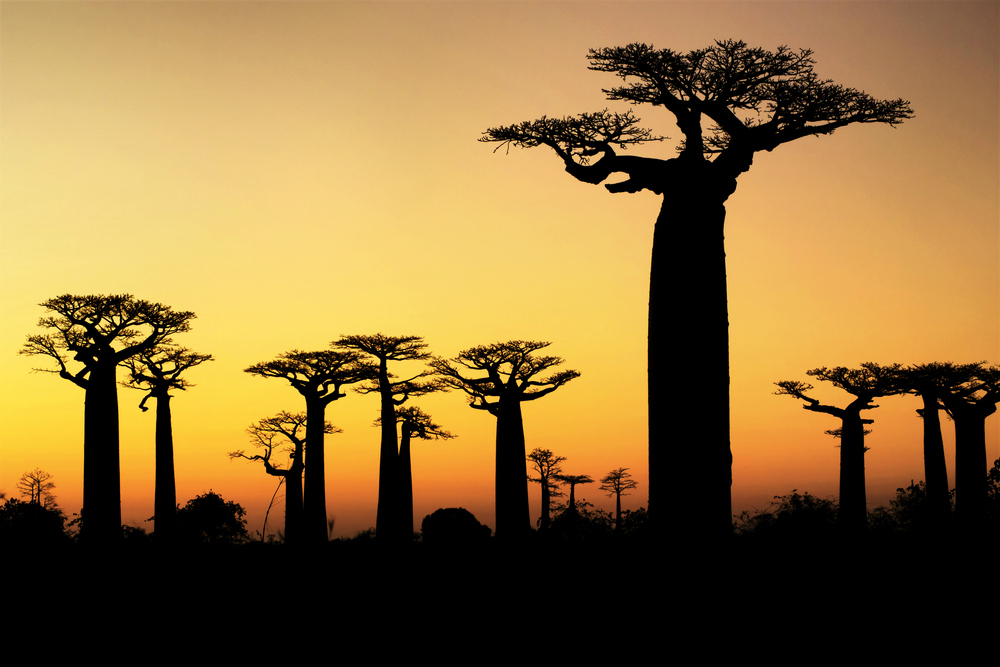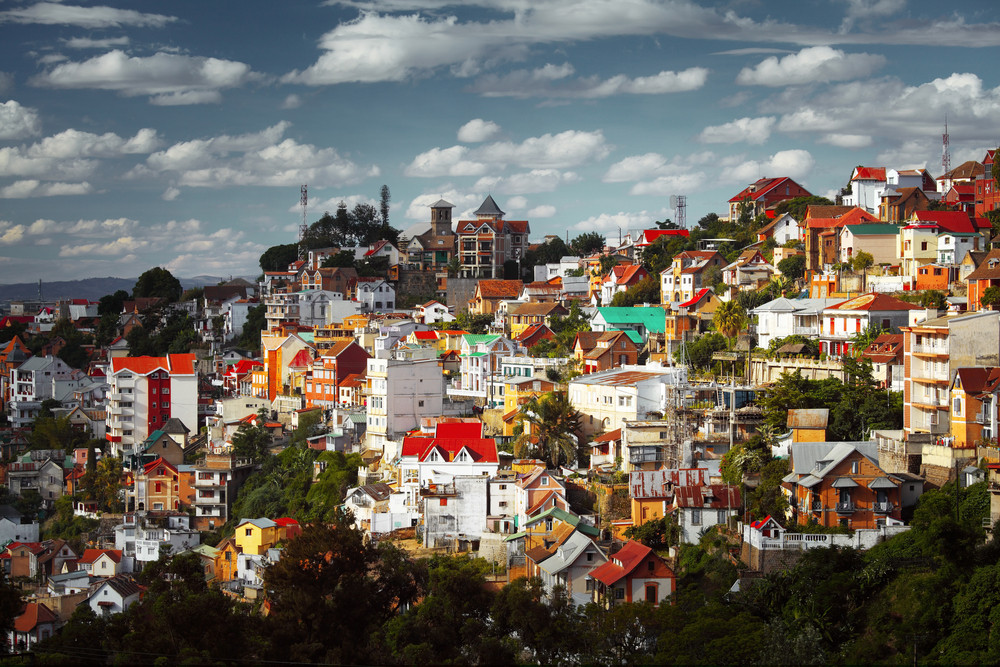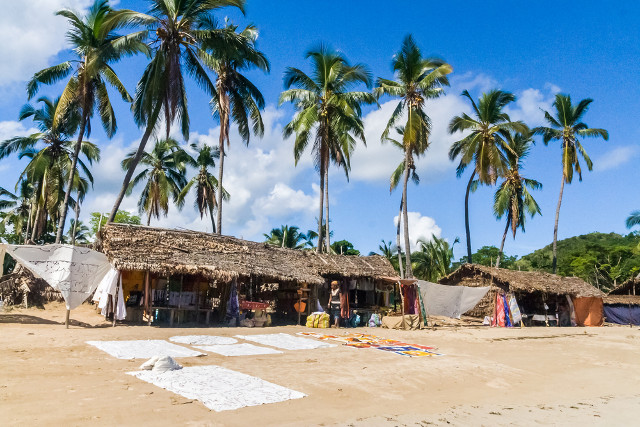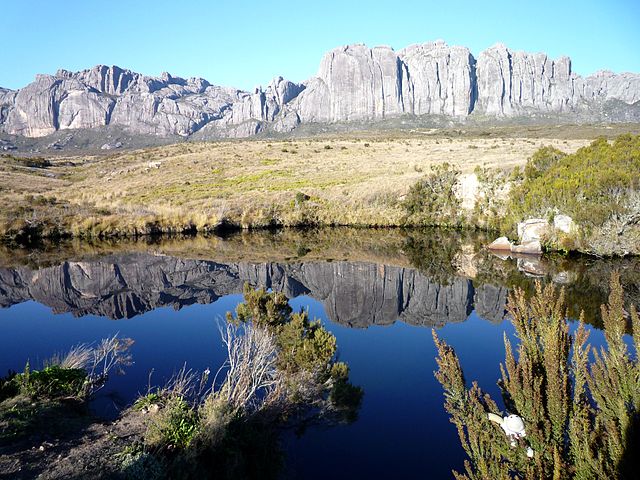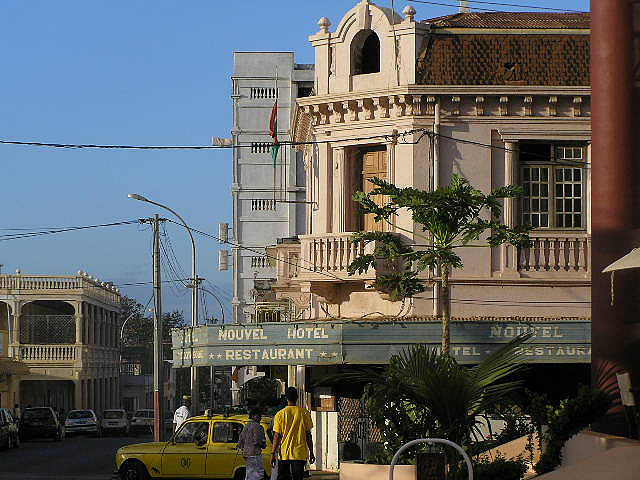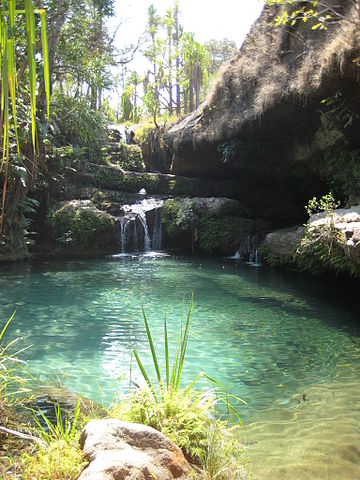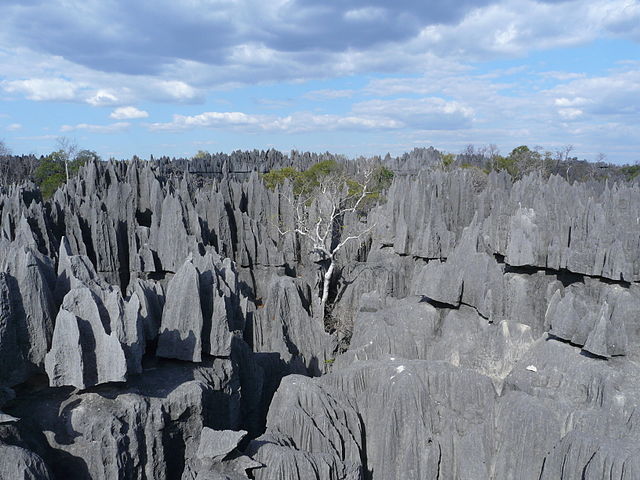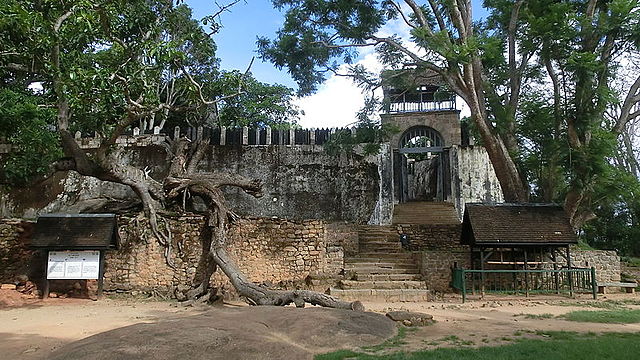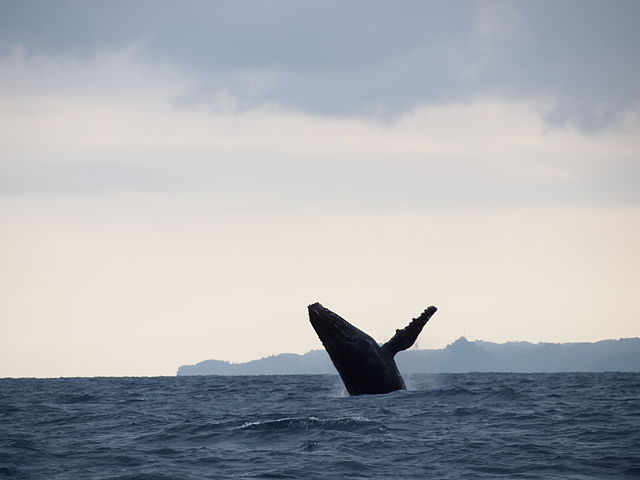Madagascar is hands down one of the most magical places in the world, let alone Africa. Stemming from its isolation (it split from the mainland about 90 million years ago), the world’s fourth-largest island is home to an incredibly diverse range of landscapes, plants, and animals. The language and population are Malayo-Polynesians, as these peoples came to the island via outrigger canoe via the Indian Ocean and were the first to settle in Madagascar. While getting to Madagascar isn’t easy or cheap, once you’re there, there are months worth of activities to do and places to go: Incredible wildlife, nature, culture, and history awaits you. Here are the top 15 things to do in Madagascar.
1) Avenue of the Baobabs
Probably the most photographed place in Madagascar, the world-famous Avenue of the Baobabs is located near the western coast of the island near the town of Morondava. This grouping of about two dozen trees is a protected area as the region is threatened with deforestation. Some of the trees are 800 years old and reach over 30 meters (nearly 100 ft) in height. The area becomes even more magical at sunset.
2) Antananarivo
Unlike many large African cities, Antananarivo (affectionately referred to as ‘Tana’) was a great and powerful city before the colonial era. The capital of the Imerina Kingdom, Tana is spread out over a series of sprawling hills and vestiges of French colonial architecture are interspersed with traditional Malagasy buildings. While there isn’t as much for the tourist as in other comparably-sized cities, there is ample opportunity to soak up the vibe, explore the neighborhoods, hit the craft markets, and discover the history and culture of Madgascar.
3) Tsiribihina River Tour
The Triribihina River winds through the valleys and jungles of northwestern Madagascar like a snake. One of the most unique ways to explore the country is by taking a river tour by pirogue or canoe. There are several reputable companies that lead tours and you can camp on the riverbank and cook under the stars as all manner of wildlife surrounds you and lulls you to sleep.
4) Nosy Be
An idyllic island just off the northwest coast, Nosy Be is the place for water activities and relaxing resorts. Half of the island’s 60,000 people live in the ironically and unfortunately named Hell-ville. Fortunately, Nosy Be and the surrounding islands are more like heaven and you can do everything here from lounge on the beach, to explore nature, rock climbing, kayaking, fishing, and cruising to uninhabited islands on a yacht.
5) Andasibe National Park
100 miles (160 km) east of Antananarivo, you’ll find Andasibe-Mantadia National Park set in the mountainous rainforest. A protected area for lemurs, this is the perfect way to encounter Madagascar’s most popular natives in their natural habitats. Hiking and biking in the area are two options, but one of the coolest ways to experience the park is to take a night tour when the lemurs and other creatures are most active.
6) Andringitra National Park and the Tsaranoro Valley
Established in 1999 and managed by the World Wildlife Fund in conjunction with the Madagascar National Parks Association, Andringitra National Park has one of the highest biodiversity rates in the entire country with over 100 species of birds and over 50 mammals alone. The park and Tsaranoro Valley are host to some of the most dramatic scenery in the entire country with stone bluffs, lush valleys, and beautiful lakes — perfect for extended hikes.
7) Ile Sainte Marie
Located just off the northeast coast, the Ile Satine-Marie (Nosy Boraha) is a picture perfect island and the ideal place to kick back and let island time take over. While definitely a tourist spot, the island is a lot more low key than Nosy Be. Its numerous hidden coves and bays were once perfect for pirates and the remains of many ships are still visible and the perfect place to explore on a snorkel or diving excursion.
8) Diving
Madagascar is inarguably one of the best diving haunts in the world. Year round warm waters make taking the plunge a great way to get off land and there are several places you can get certified. Depending on the time of year, you may be able to swim with whale sharks. Bountiful marine life is widespread and the aforementioned Ile Sainte Marie is the place to check out wrecks. While the most popular hot spots are centered in the north, almost any place is a good one to get wet.
9) Antsiranana
Home to one of the largest deepwater harbors in the Indian Ocean, Antsiranana is the capital of the northern Diana Region. Famed for its colonial architecture and history, this charming town was first discovered in 1543 by Portuguese explorer Diogo Soares. Coveted by France, Queen Ranavalona III was forced to give Antsiranana over to protectorate status after the Franco-Hova War.
10) Isalo National Park
Cavernous canyons, savannah-like grasslands, sandstone monoliths, and tree-lined lakes are just a few of the landscapes you’ll find trekking and camping in Isalo National Park. Waterfalls that pour into hidden pools are waiting to be discovered and swam in, not to mention the literally hundreds of species of plants and animals you’ll find. Hikes can last from an afternoon to a week or more (with a guide, of course). Isalo is really unlike anywhere else in the world.
11) Tsingy de Bemaraha Reserve
Another one of Madagascar’s fascinating and truly unique parks is Tsingy de Bemraha or “The Stone Forest.’” The incredible landscape of thousands of razor-sharp, slate grey limestone towers puncturing the blue sky makes quite the dramatic vista. As with most places, there is an abundance of wildlife here and also so suspension bridges for the brave. Getting to the park in the west of the island takes some time.
12) Royal Hill of Ambohimanga
Located in Antananarivo, the Royal Hill of Ambohimanga was the seat of Malagasy royalty in times past. Definitely one of the most interesting and important parts of Madagascar’s history, the walls that surround the enclosure were constructed from a mortar made of lime and egg whites over 150 years ago. Housing a museum, this 500 year old palace and grounds is a must see.
13) Masoala National Park
Masoala National Park actually protects multiple areas including three marine parks. Within its large boundaries you’ll find pristine rainforest, coastal and flooded forest, coral reefs, marshes, mangroves, and more. Home to a dizzying amount of wildlife, you may even be able to spot the elusive Aye-aye, the largest nocturnal primate in the world. The marine parks are ideal for snorkeling and kayak adventures as well.
14) Whale watching
Madagascar is one of only a handful of places in Africa where whale watching is possible. The waters off Ile Sainte Marie are the best place to catch a glimpse of Humpback Whales and September is the time you’ll be most likely to see them. A perfect excursion after your days of kicking back on Sainte Marie!
15) Toliara
If all the nature, wildlife, and beaches have worn you out, head south west to Toliara, a larger city on the coast. This commercial center was founded by the French in the 1700s. Home to several museums including ones featuring Arts and Traditions of Southern Madagascar, Regional Museum of Toliara, Museum of the Sea, and the Antosokay Aroboretum, Toliara also has a well known shell market.
More from AFKTravel:
The Fantastic Hotels Of Nosy Be, Madagascar
The Heart Of Madagascar: 10 Things To Do In Antananarivo
7 Events In Madagascar You Need To Attend
This article was originally published December 10, 2014.
Want to discover the finer side of Africa? Sign up for our weekly newsletter.
